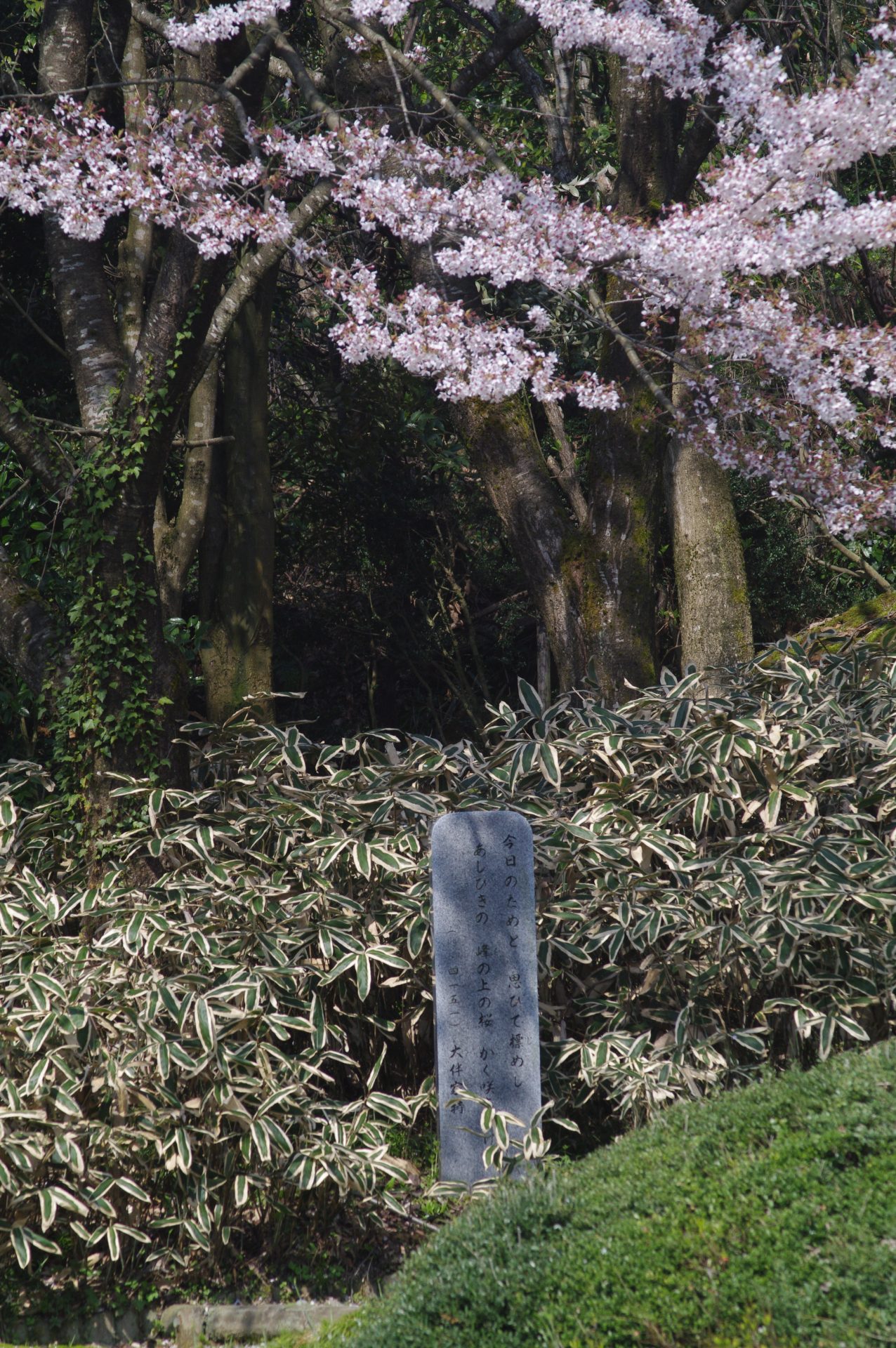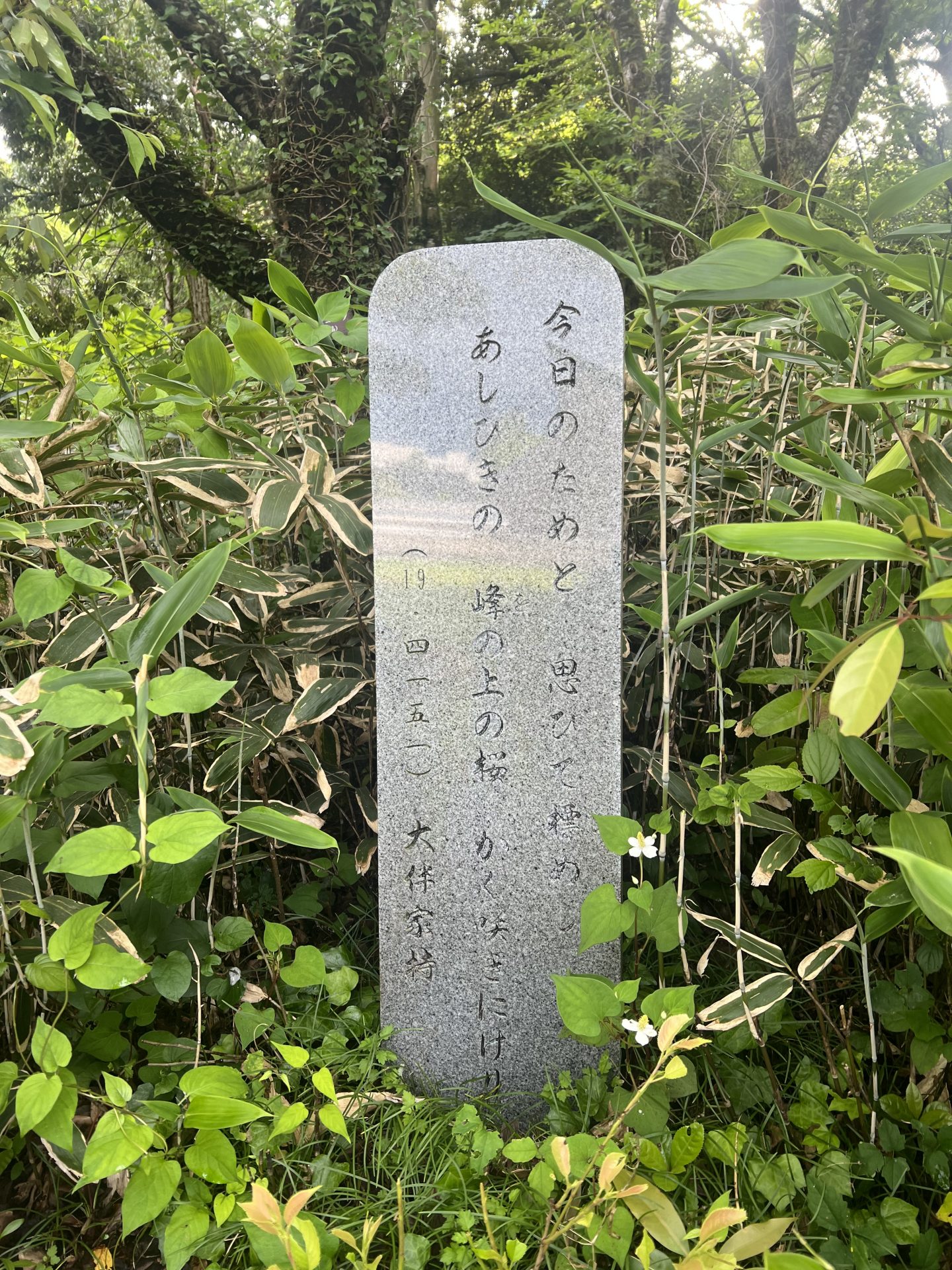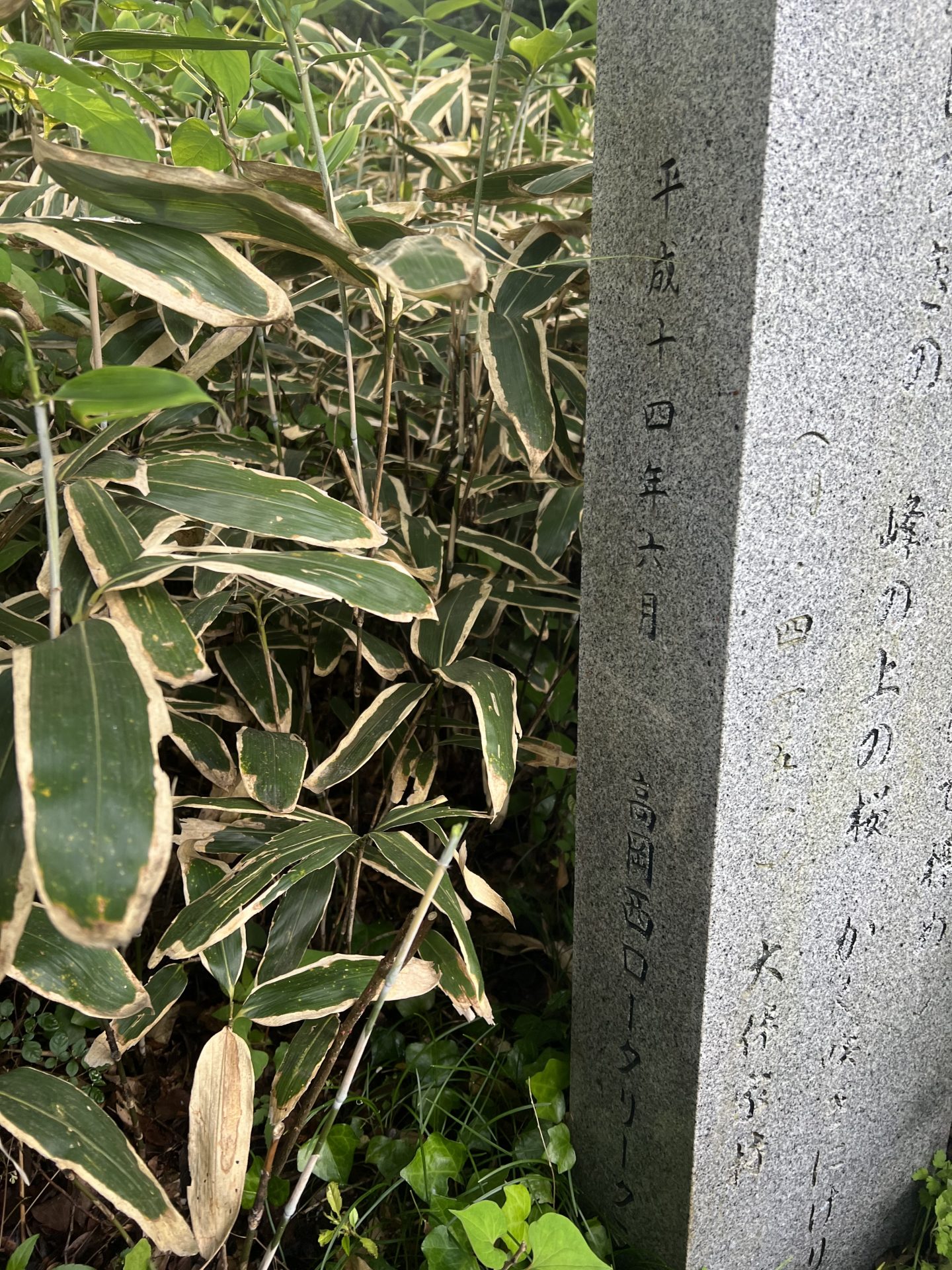歌碑3「桜の花」-高岡市万葉歴史館 屋上庭園Monument No.3 “The cherry blossom” -Rooftop Garden of the Takaoka Manyo Historical Museum
2022年07月13日

桜の花を期待して印をつけたこと、花が咲いたときの達成感、そして山頂に咲いた桜の木の美しい姿など、具体的に描写してはいないのに、贅沢な美の世界が伝わってくる。
Although the poem states very little directly, it conveys a sumptuous world of beauty: the poet marking a tree in anticipation of seeing the lovely blossoms there, the sense of fulfillment upon seeing the blossoms in bloom, and the lovely setting of the cherry blossom tree blooming on the peak.
![万葉歌めぐりの旅[Man'yōshū Literary Pilgrimage]](https://www.manreki.com/manyo-songs/images/common/pic_logo.svg)










解説
Commentary
桜の花
The cherry blossom
『万葉集』の4151番の歌。『万葉集』は、7世紀前半から8世紀後半にかけての約130年間の歌を収めた現存日本最古の歌集で、4500首余りの歌が収められている。この歌の作者は大伴家持(718?~785)、『万葉集』でも最も多くの歌を残す歌人である。
巻19冒頭には天平勝宝二年(750)三月一日~三日朝にかけて作られた十二首の歌が並ぶ。これらは「越中秀吟」と呼ばれ、家持の越中時代の歌の中でもとりわけ評価が高い。この歌は、その「越中秀吟」の直後に並ぶ、三日の宴席で詠まれた三首の歌(4151~4153)のうちの第一首。
この三月三日の宴は、いわゆる上巳の宴。上巳とは中国由来の節日で、漢詩文の素材としてもよく見られる「曲水の宴」(庭園内の小川で杯を流しながら詩歌を作る宴)が行われる日である。この歌を含む4151~4153の三首にはいずれも「今日」という語が詠み込まれており、そこからも家持がいかに今日この日の宴を楽しみにしていたかが伝わってくる。宴の席に飾られた桜の枝を見てこの歌を詠んだとも思われるものの、あるいは実際に二上山の山桜が宴席から望めたのかもしれない。
桜の花を期待して印をつけたこと、花が咲いたときの達成感、そして山頂に咲いた桜の木の美しい姿など、具体的に描写してはいないのに、贅沢な美の世界が伝わってくる。 高岡市万葉歴史館の屋上庭園に歌碑が立つ。
(解説 ピーター・J・マクミラン)
This is poem number 4151 of the Man’yōshū. The Man’yōshū is the oldest existing collection of poetry in Japan compiled, over a period of around 130 years from the first part of the 7th Century to the latter part of the 8th century and consists of over 4,500 poems. The author of this poem is Ōtomo no Yakamochi.
Book 19 of the Man’yōshū begins with twelve poems composed between the first and the third day of the third month (mid-April) of 750. These poems are known as “Etchū Shūgin” (Splendid Poems of Etchū) and are some of the most highly regarded poems from Yakamochi’s time in Etchū. The present poem comes directly after the “Etchū Shūgin” and is the first of three poems (poems no. 4151 to 4153) that depict a banquet held on the third day.
This poem was composed on the third day of the third month. On this day the Winding Stream Poetry Party (Kyokusui no En), often depicted in Chinese poetry, was held. During this party, poems were read while the participants floated sake cups (sakazuki) in the small stream in the garden.
Although one can interpret this poem as a depiction of the cherry blossoms that were on display at the banquet, it can also be interpreted as depicting the cherry blossoms on Mount Futagami, which could be seen from the banquet hall. Poems 4151 to 4153 all use the word “today” in them, illustrating how much Yakamochi was looking forward to the banquet. Although the poem states very little directly, it conveys a sumptuous world of beauty: the poet marking a tree in anticipation of seeing the lovely blossoms there, the sense of fulfillment upon seeing the blossoms in bloom, and the lovely setting of the cherry blossom tree blooming on the peak. This waka stone monument is located in the roof garden of the Takaoka Manyo Historical Museum.
(English Translation and Commentary by Peter Macmillan)